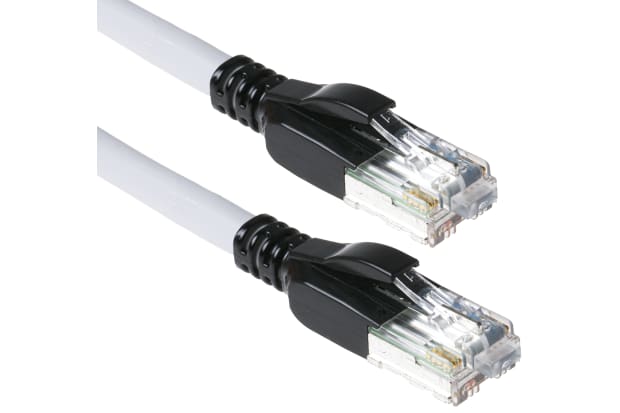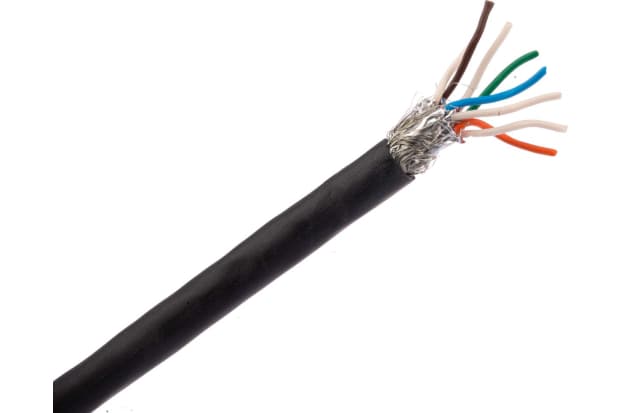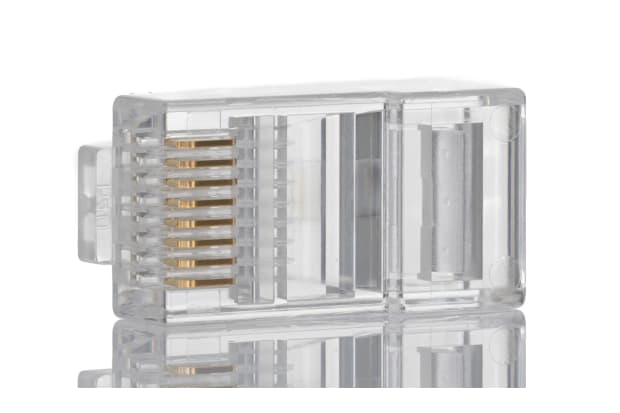- Published 31 Aug 2023
- Last Modified 26 Mar 2024
- 14 min
A Complete Guide to Cat 7 Cable
In this guide, we’ll look at some of the key features and applications of Cat 7 cable, and how it builds on the previous capabilities of the preceding Cat5 and Cat6 Ethernet standards.

What is Cat 7 cable?
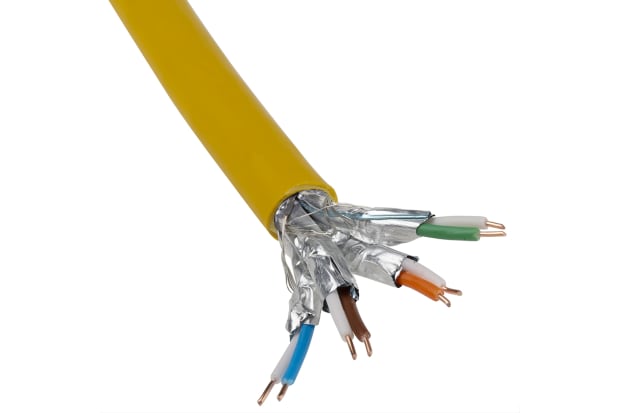
A Cat 7 cable, also known as a Category 7 or Cat-7 cable, is a high-end patch cable for wired Gigabit Ethernet networks. It is a shielded twisted pair cable that can achieve Ethernet speeds of 1 Gbps or more between servers, switches and computers.
Cat 7 cables are in high demand across various sectors that need fast and reliable internet and data transfer. As we approach the ‘Internet of Things’ era, where many devices can send and receive real-time data, we need to keep up with the latest technology. Buying a Cat 7-rated network communication cable is one way to do that, as it offers a significant improvement in speed and efficiency for our Ethernet infrastructure.
Cat7 cable specifications
Category 7 Ethernet cable specs are defined in the ISO/IEC 11801:2002 (Information technology - Generic cabling for customer premises). This specification is also known as the Class F standard, which is why the Cat7 cable is sometimes referred to as an ISO Class F cable. This Cat7 Ethernet cable specification dictates that the wired connection must be:
- Capable of delivering certain data transfer rates reliably over a defined range of distances
- Built to meet stringent criteria around crosstalk and system noise-blocking
- Able to cope with a range of potentially problematic environmental hazards as it delivers these speeds
- Be guaranteed a minimum lifespan in continual operation
In the following sections, we’ll look at each of these specifications in more detail.
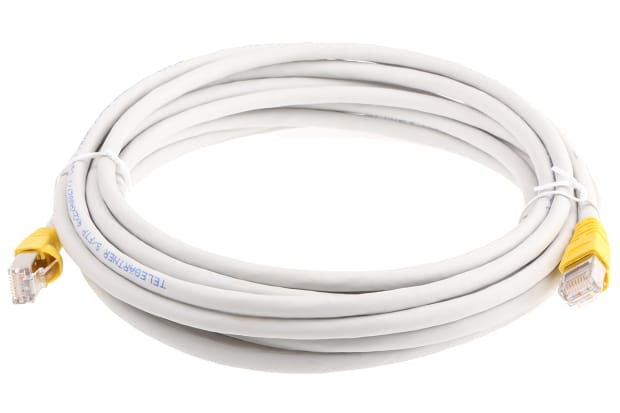
Cat7 cable speed
Cat7 cables were designed to support 10 Gbps Ethernet, with laboratory tests demonstrating capabilities exceeding this, reaching up to 40 Gbps at 50 metres and 100 Gbps at 15 metres. However, achieving these speeds in practice may require precise setups of compatible hardware. To meet Cat7 Ethernet cable speed specifications, cabling runs must support frequencies of up to 600 MHz over 100m of copper wire, offering significantly higher performance compared to earlier revisions such as Cat5e and Cat6.
Cat7 cable standards
Ratified in 2002, Cat7 cabling standards enable 10 Gigabit Ethernet over 100m of copper cabling. Featuring four individually shielded twisted copper pairs and an overall cable shield, Cat7 cable is designed to meet strict criteria for signal loss over distance, offering improved protection against issues like crosstalk and EMI. While Cat7 standards differ from earlier revisions like Cat5 and Cat6, Cat7 (Class F) is backward compatible with systems using these previous standards.
Cat 7 cable vs other Ethernet types
Cat6 vs Cat7 cable: What is the difference?
The Cat 7 cable is similar in physical makeup to the previous Cat6 cable. Both versions use the same twisted and sheathed four-pair cable design as each other, capable of delivering transmission frequencies (bandwidth) of up to 600 MHz. Therefore, both support 10 Gbps Ethernet signals over distances of up to 100m.
One additional strength of Cat7 cable over Cat6 is that the newer variant is better shielded against crosstalk and EMI, having been double-shielded (both individual wire twists and the cable as a whole) to meet more stringent specifications in this regard. This is the only out-of-the-box physical difference between most Cat6 and Cat7 cables. While double-shielded designs are now available with Cat6 and even earlier revisions of Ethernet-grade wire, it’s part of the core design for Cat7 versions.
The criteria for the performance lifespan of Cat7 cable are also tougher. However, in terms of Cat6cable vs Cat7, it would be misleading to claim that either was ‘better’ per se. As with so many of these sorts of products, it’s all about picking the right one for achieving what you want it to do, under the conditions you need it to do it in, and at the most cost-effective price for meeting those needs. You can find more in-depth information about Cat6 cable in our detailed Cat6 Cable Guide
Cat5 vs Cat7 cable: What is the difference?
As noted above, the jump in potential bandwidth performance between Cat5 and Cat7 Ethernet cables is stated as being in the region of around 6x improvement. This will, of course, depend to a large extent on other factors, particularly for many home users still connecting via increasingly cost-effective Cat5 cabling in their Ethernet/LAN setups due in part to its easy installation and routing.
Key considerations here will generally include the capabilities of individual hardware components elsewhere in the system and the rated speeds you have access to through your Internet Service Provider.
Cat7 vs Cat8 cable: What is the difference?
Cat8 cable was only very recently ratified as a standalone revision, and a noteworthy aspect of the Category 8 standard (under ANSI/TIA 568-C.2-1) is that it’s defined up to 2000 MHz - but only for distances up to around 30m, depending on the specific patch cords used.
In terms of Cat7 vs Cat8 networking performance, the latter is now available on the open market. Still, buyers should bear in mind that it’s currently intended almost exclusively for use in smaller-footprint data centres (where there’s very little distance between servers and switches).
The newest revision may well become a viable option for more general use in due course. Currently, however, it’s not recommended for most scenarios in which a standard Cat7 version would be expected to perform well.
Types of Cat7 cable
Cat7a cable
Cat7a, or Category 7 augmented, operates at frequencies up to 1000 MHz, introduced as a future-proofing measure for potential 40 Gbps Ethernet standards. However, with the emergence of Cat8 cables rated to 2000 MHz, Cat7a's role has diminished.
While Cat7a cables may offer speed boosts in specific applications, they are not widely supported for significantly faster speeds than Cat7. Despite its thicker build for enhanced shielding, Cat7a is often considered alongside Cat7 for similar performance in most scenarios, particularly in high-performance data centre applications.
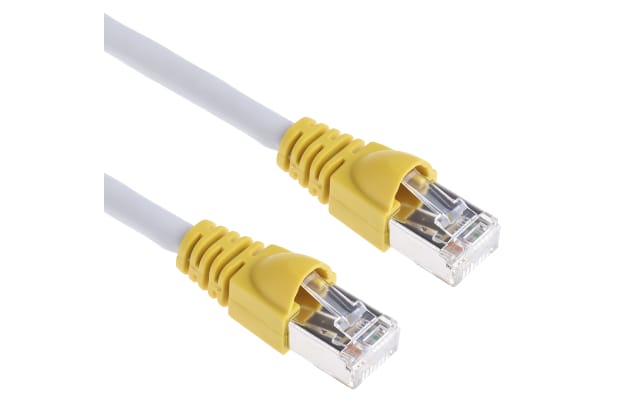
Cat7 RJ45 cable
Most off-the-shelf Cat7 Ethernet cables come pre-terminated with RJ45 jacks, making them ready for immediate use. These connectors are standard for Ethernet connections, compatible with home routers and LAN switches. However, when purchasing Cat7 cables in bulk, they may not come with pre-installed RJ45 connectors. In such cases, connectors need to be acquired separately and wired onto the cable ends using standard wiring schemes like T568A or T568B.
What does UTP, FTP, SFTP, STP and SSTP mean?
When researching Cat7a cable options, you'll encounter acronyms like UTP, FTP, and SFTP, referring to different shielding configurations inside the cable. These prefixes affect factors such as cable weight, flexibility, cost, and performance.
Below is a brief overview of these common acronyms and what each one means.
UTP Cat7 cable
Cat7(a) UTP cable denotes an Unshielded Twisted Pair design. In this configuration, the four pairs of twisted copper wires that make up a Cat7 Ethernet cable are sheathed only by their own interior jacketing and that of the external cable. In other words, UTP cable comes without any additional shielding placed between the twisted wire pairs and the outside sleeving of the cable.
UTP Cat7 cable is usually the most cost-effective version of Cat7 and Cat7a Ethernet Cable, with solid enough protection against EMI and signal attenuation to meet the baseline requirements for this standard.
F/UTP Cat7 cable
F/UTP Cat7(a) cable lacks individual shielding around twisted wire pairs but features a foil screen beneath the exterior jacketing, collectively shielding the four pairs. This moderate shielding level offers increased protection against signal loss compared to UTP versions, meeting Category 7 requirements.
STP Cat7 cable and FTP Cat7 cable
When you see Ethernet cables labelled as either Cat7(a) STP or FTP, these acronyms stand for Shielded Twisted Pair or Foiled Twisted Pair, respectively, and they essentially mean the same thing. Going one step further than F/UTP above, both STP and FTP denote that the cable features an additional layer of protective foil screening wrapped around each individual pair of twisted wires inside.
Again, this is a further step closer to optimal protection than the version above.
SFTP Cat7 cable and SSTP Cat7 cable
The most comprehensive level of additional signal protection for Category 7(a) Ethernet cable is typically provided by products marked SFTP (Shielded Foiled Twisted Pair) or SSTP (Shielded Screened Twisted Pair). Following the same pattern as previous entries, the Cat7(a) SFTP or SSTP designation combines both a foil shield/screen between the outer cable jacketing and the inner wires and an additional wrapping around each twisted pair individually.
What is a Cat7 cable used for?
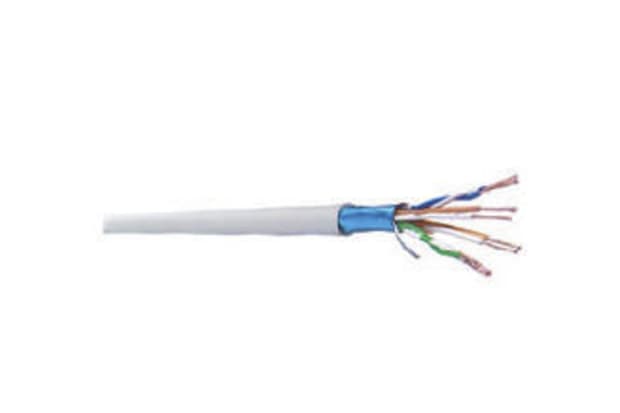
Cat7 and Cat7a 10 Gbps Ethernet cables are extensively utilised across various industries requiring high-performance networking and data transfer infrastructure. They're also increasingly popular among home users seeking optimal system and network performance.
Some very common examples of Cat7(a) cable being relied on in daily use might include any of the following:
Cat7 Ethernet cables
Category 7 Ethernet cables (also referred to as Cat7 LAN cables in everyday use) are used to form the connective tissue between modems, hubs and individual computers on networks of all shapes and sizes. These can range from sprawling data centres and server environments to individual home setups where enthusiasts seeking higher speeds and lower latencies turn to Cat7 cable for gaming, streaming and up/download performance boosts.
Commercial and industrial uses for Cat7 cable
Cat7 cables were originally developed for use in larger-scale industrial Ethernet networks - and, as such, they’re designed not only to provide high speeds and bandwidth capabilities but also to withstand a broad range of environmental and mechanical hazards.
This can include anything from temperature extremes and UV/moisture exposure to direct contact with a wide range of solvents, oils and chemicals, making Cat7 wire an equally ideal choice for robust outdoor applications such as railway cables.
Domestic uses for Cat7 cable
In addition to enthusiast gaming setups, Cat7 cables have gained popularity among home users for domestic LAN networks and connectivity setups. While many typical home setups may not fully utilise the speeds and bandwidths offered by Cat7(a) cables, opting for the highest revision wire can still provide performance enhancements in basic router-to-device networking scenarios.
As the trend towards smart homes continues, individuals planning to wire their homes often choose Cat7 and Cat7a cables as a future-proofing measure, anticipating advancements in home hardware and connection speeds.
However, it's worth noting that Cat7 and Cat7a cables are thicker, stiffer, and heavier than earlier revisions, which may impact cable routing in tight spaces or areas requiring precise bends.
How to Install Cat 7 Cables
Installing Cat 7 cables can be a bit challenging, as they have different connectors and wiring standards than other cables. But don’t worry—here are steps and tips for installing Cat 7 cables in your home or office.
You will need:
Cat 7 cables and connectors (RJ45, GG45, or TERA)Adapters or converters if neededA wire stripper or cutterA crimping toolA cable testerA network analyser (optional)A drill and mounting platesClips, ties, or conduits
The installation steps are:
- Plan your network layout and cable routing. Drill holes and secure cables as needed.
- Choose compatible Cat 7 connectors for your devices. Buy adapters or converters if needed.
- Cut and strip Cat 7 cables. Separate and align wire pairs according to wiring standard (T568A or T568B).
- Insert wires into connectors and crimp them. Test connection with cable tester. Test network with network analyser (optional).
- Repeat for the other end of the cable and connect to devices.
Congratulations, you have successfully installed your Cat 7 cables! You can now enjoy faster and smoother internet and data transfer experiences with your devices.
How to Choose the Right Cat 7 Cables for Your Needs
Cat 7 cables can provide you with the best performance and reliability for your network, but they also come with some challenges. You need to consider several factors before choosing the right Cat 7 cables for your needs, such as:
- Network requirements: Compare your network needs with Cat 7 specifications. Cat 7 offers higher speed and bandwidth, but also higher cost and less compatibility. Check if your network equipment supports Cat 7 cables.
- Cable length and flexibility: Evaluate cable length and flexibility needs. Cat 7 supports longer distances, but is less flexible and harder to install. Avoid bending, twisting, or stretching Cat 7 cables, as this may damage the shielding and affect the signal quality.
- Connector compatibility and types: Check connector types and compatibility. Cat 7 uses different connectors than other cables, such as RJ45, GG45, or TERA. These connectors have more pins and contacts than standard RJ45 connectors and are backwards compatible with them. You may need adapters or converters to connect different types of connectors.
- Cable quality and durability: Consider cable quality and durability. Cat 7 has thicker shielding for better signal quality, but also less flexibility and increased difficulty in installation. Use proper tools and techniques to cut, strip, and crimp Cat 7 cables, as well as test the connections with a cable tester.
- Price and availability: Compare prices and availability of Cat 7 cables with alternatives like Cat 6 or Cat 8. Cat 7 is more expensive and less common than other cables, due to its advanced features and limited demand. Consider the cost of adapters or converters if needed. Shop around for the best deals on Cat 7 cables, and look for reputable brands and suppliers.
Summary
When planning or shopping for the right type of Ethernet networking cables for your needs, it’s important to remember that there are numerous grades, distinctions and categorisations even within a particular version/revision of Ethernet cabling.
For Cat7(a) cables, you can optimally support current and future network speed potential by selecting products that benefit from more advanced additional shielding or by designing the network such that distances are reduced, and signal attenuation is minimised. In many applications, these sorts of variables can often give dramatically different results, even for two setups using functionally identical Category 7 or Cat7a cables.
FAQs
Product spotlights
Browse our best selling Cat7 cable products:
